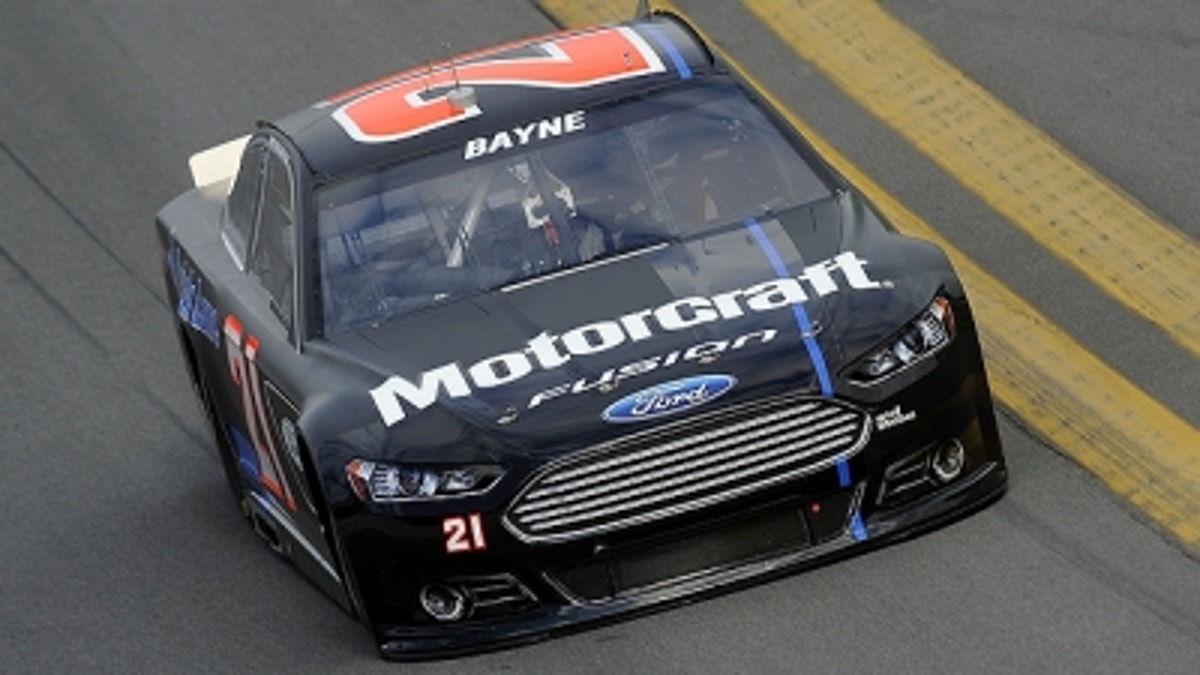
It was only two years ago that a barely known, barely-20-year-old Tennessee driver named Trevor Bayne won the Daytona 500 in one of the great surprises of NASCAR’s modern era.
In a year in which tandem drafting was the byword at Daytona, Bayne played the game to its fullest through two weeks of preparation then ran a perfect final five laps to break into Daytona history.
He was in the news again at the World Center of Racing this week, posting the fastest lap – 199.650 mph – over three days of preseason testing.
But Bayne has been mostly out of checkered-flag news since his spectacular win at Daytona Feb. 20, 2011. He won a Nationwide Series race at Texas Motor Speedway that season, but he was scoreless in limited Cup and Nationwide racing last year.
He’s back for a limited schedule – about half the races – with the Wood Brothers this year and a full Nationwide schedule with Roush Fenway Racing.
But, until Bayne manages some bigger headlines, Daytona 2011 will stand as his high-water mark.
Can he do it again?
Absolutely, crew chief Donnie Wingo said. Everything depends on two things – having a fast car (which Bayne obviously has) and being in the right spot in the final 10 laps as the late-race shuffling begins.
“It’s one of those deals where you have to put yourself in position at the end of the race,” Wingo said. “It’s going to come down to how the cautions fall and how it all works out. You’ve just got to position yourself for those last five or 10 laps and be up near the front.”
But, Wingo said, this is not dramatic new information. Everybody knows the race will come down to position placement in the final moments.
“Anybody can win here,” he said. “Of course, you have to have a good car and a fast car. We’ve been fortunate to be able to do that.”
This year’s race, Wingo said, is likely to evolve quite differently from Bayne’s victory year, when tandem drafting was the matter of the moment.
“I think now you’re going to have to have a faster car than what you had when they were tandem racing,” Wingo said. “You could take a slower car with tandem racing and run better when two hooked up. Now the driver is going to have to be able to side-draft. That’s going to play a big part when you’re trying to pass someone.”
A key part of Bayne’s 2011 victory was the fact that he ran at or near the front most of the day, a plan that has worked well for the 21.
“You can’t be too cautious, and that’s something we haven’t done,” Wingo said. “If you stay at the back, that’s where the wreck is. You might as well be toward the front. Historically, that’s been the best place to be.”
Mike Hembree is NASCAR Editor for SPEED.com and has been covering motorsports for 30 years. He is a six-time winner of the National Motorsports Press Association Writer of the Year Award.
